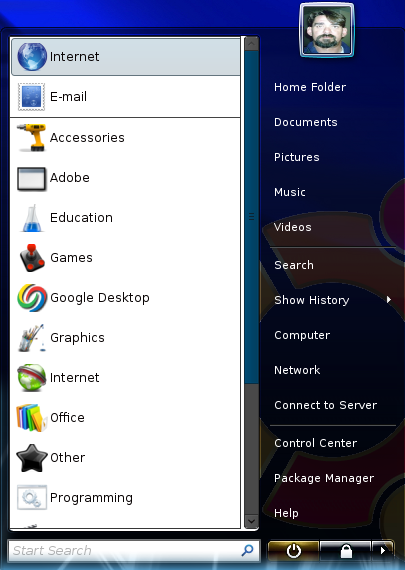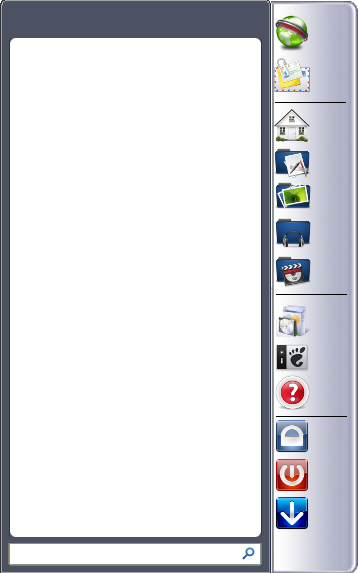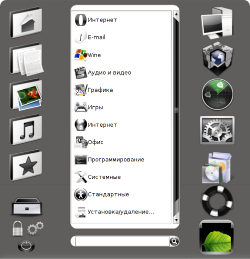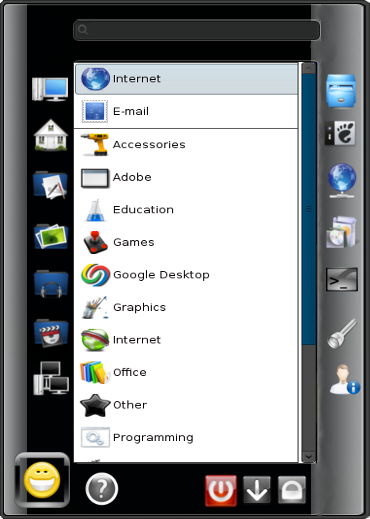
Nothing can give better endorsement than to show where Linux succeeds. We all know businesses use Linux but sometimes we are hard pressed to name them in discussions. Most everybody knows of Ernie Ball but what about AutoZone, Wal-Mart and others and government entities. The list below comes from www.aaxnet.com
Please go to the web site for more information on each company listed.
Amerada Hess Corporation - Oil Exploration Supercomputing - Amerada Hess Corp is a $7.4 billion petroleum company, but the supercomputers traditionally used to analyze oil exploration data are rather costly even for a company of this size. No longer a problem. Amerada Hess now uses a large Linux cluster for the job.Amerada Hess Corporation
BART (Bay Area Rapid Transit) - Light Rail Metropolitan Transit System - This system tracks the flow of electricity from the high voltage DC power lines of Pacific Gas and Electric to the distribution of electricity via the third rail. If an emergency required the evacuation of a train, this system would be used to turn off the electricity to ensure the safety of passengers as they exited the system.
Boscov's Department Stores - special invoicing, server consolidation, Web site, etc. - Boscov's, America's largest family owned department store chain, has been steadily moving it's back office operations to Linux, and will probably eventually migrate POS (Point of Sale) systems as well.
Burlington Coat Factory - Entire Systems - Burlington Coat Factory is a "Factory Outlet" retailer with 280 stores in 42 states. Initial Linux installations at their new distribution center and a few new stores proved highly successful, so roll-out to existing stores began. An order for 1,250 Dell computers preloaded with Linux was placed to support the effort.
The Linux systems are used to run warehousing and distribution, the gift registry and back office functions such as ordering and general desktop. The chosen office productivity suite is Applixware Office, which allows a very high degree of customization.
Conoco - Oil Exploration Supercomputing - Conoco is one of several major petroleum companies that have chosen to use inexpensive Linux clusters instead of costly supercomputers to analyze oil exploration data.
Cisco - Worldwide Printing System - Cisco, a $21 billion maker of routers that tie the Internet together, signed a major agreement with Microsoft regarding support for Active Directory. As part of that deal, Cisco management declared Cisco an "all Microsoft" company.
Unfortunately, Cisco's IT staff couldn't get network printing services to work right through NT servers (and you can't say Cisco engineers don't understand networking, now, can you?). Cisco's worldwide printing services now run on Linux.
Digital Domain - Visual Effects Supercomputing - Digital Domain is a major visual effects studio. In particular, they did the visual effects for Appolo 13 and Titanic. The effects for Titanic were particularly demanding, too demanding for their SGI Inigos, and would have normally required a supercomputer costing millions. Digital Domain was able to do the job on an inexpensive Linux cluster instead.
Ernie Ball Inc. - Entire Operation - Ernie Ball was one of those unfortunate companies turned over to the BSA (Business Software Aliance) by someone with a grudge. While few "infractions" . There's hardly a small business anywhere that has all the paperwork together for their software, and while few "infractions" were found, that was enough to be very costly. Ernie Ball decided this would never happen again and made a very successful migration to Linux.
Garden Grove California, City of - major operations - The City of Garden Grove began moving operations to Linux in 1995 with central data systems running Samba and the Pick database. The initial deployment was so successful and saved so much money the city has been gradually moving other operations to Linux, including some desktop systems.
Google - Search Engine - The wildly popular Google search engine simply would not be possible without a customized version of Linux fit exactly to its needs.
Just Sports USA - A fast growing chain (now 50 stores) selling sports items - All Stores, Back Office functions, Inventory and eCommerce systems run on Linux. All functions are integrated together using a PostgreSQL database. The eCommerce system runs on Linux / Apache Web servers and is also integrated with the inventory database. Postgre and Apache are also Open Source products.
Kaiser Aluminum - Manufacturing Control - Kaiser, one of the world's largest producer of aluminum, aluminum sheet and foil, has chosen Linux for many applications on the manufacturing floor. It works side by side with Unix, Windows NT and specialty "real time" operating systems.
Largo Florida, City of - City office desktop systems. - Largo has about 400 thin client workstations running the KDE Desktop from a Linux server. Database workloads were migrated from SCO Unix, AIX and Windows NT servers for a multi-million dollar savings. Largo figures its IT budget is about half that of other cities its size. Using thin clients provides a low cost, very low maintenance, uniform and easily administered computing environment for all city users. At peak, there are about 230 simultaneous users.
Lawson Inc. (Japan) - In-Store Consumer Web Ordering System - Lawson, a giant convenience store chain (7,600 stores) in Japan, will be placing two Linux based computers in each store to implement it's new Web ordering system. The over 15,000 computers will be purchased from IBM pre-configured with Linux installed.
Mexico City - government of - Everything! - The government of Mexico City have concluded they can no longer justify the ever rising cost of Microsoft Windows when the cost of Linux software is very low. Linux has already proven itself in the city's motor vehicle licensing agency and in the Mexican school system. Money saved will be used in social welfare programs.
Mobil Travel Guide - Major Consumer Web Site - This Exxon division found Linux ideal both from a cost/performance standpoint and for scalability as the division grows.
Omaha Steaks - On-Line Commerce - Advertisements for this mail order company can be found in the back of most up-scale home oriented magazines. They were running their internal systems on an IBM AS/400 and outsourced their Web site, but they wanted to tie the on-line ordering directly into the AS/400. A cluster of Linux servers now runs the Web site and connects to the AS/400.
Panasonic - Major Electronics Manufacturer - Panasonic's popular DBS business telephone system included a voicemail system based on Windows NT, but it was a bit pricy. To be more competitive in smaller businesses, Panasonic developed a system incorporating 1CTI's Linux based voice mail software. The Linux based system has been so well accepted by the customers the Windows based system is being discontinued.
Raymour & Flanigan - Furniture Chain (50 stores in Northeast) - The store chain has trnsferred most of its servers to Linux, and is replacing Windows 98 PC with Linux based "thin client" workstations in its service centers. Inventory and other databases are now being migrated from Microsoft Access running on Windows servers to Oracle running on Linux.
Royal Dutch/Shell - Oil Exploration Supercomputing - One of the world's largest petroleum companies, Royal Dutch/Shell could certainly afford the supercomputers traditionally used to analyze oil exploration data, but why do that when your competitors are using inexpensive Linux clusters to do the job. Royal Dutch/Shell has decided to set up a bigger Linux cluster than the ones it's competitors have.
Tommy Hilfiger - Clothing Brand - Note: website designed by idiots won't let you in at all without Flash plug-in. The company is installing three Linux based portals running on IBM xSeries servers. The first provides remote access to data on the company's IBM iSeries (AS/400) datacenter computers. The second provides access for clothing manufacturers to designs and specifications. The third provides B2B eCommerce access to retailers and a company store for employees. Company officials say the Linux systems provide the required performance at a lower cost than any other platform.
Toyota Motor Sales, U.S.A. - Dealer Communications System - Toyota is installing a Linux based system connecting all its car dealers to it's factory. This is a Web based system from the ground up, and will be handling 30 different functions including parts ordering, warranties, sales transactions and repairs.
Travelocity - Travel Agency - Travelocity is the back-end system for the travel services offered by AOL, Yahoo and US Airways. It's Web site gets 11 million page views and 170,000 email transmissions a day. The system is being migrated to Linux and Java.
U.S. Army - major military organization - The U.S. Army's Land Warrior program, the first stage of a far reaching battlefield information and communications system, leads a general move to Linux. The Army says that "Evidence shows that Linux is more stable". Apparently the Army has issues with Microsoft's "blue screen of death".
U.S. Federal Courts - case management, case tracking, finance and accounting, probation and pretrial services - A support contract has been awarded (Nov-03) to PEC Solutions for migration of the Federal Judiciary to a Linux based system.
U.S. Postal Service - OCR Supercomputing - The Postal Service had declared itself an "all Windows NT" house, but you can't use NT for what it simply can't do - so they now sort all the bulk mail on over 900 Linux clusters scattered around the country (at less than half the cost of the next cheapest solution (and that wasn't NT either)).
The OCR (Optical Character Recognition) system uses scanners that were already in place. The Linux system consists of 5 rack mounted PCs, one to handle the scanners and sorting equipment, and 4 to share the computational tasks.
WesternGeco - Oil Exploration Supercomputing - IBM has built a Linux based supercomputer for analysis of seismic data. This machine is built from 256 IBM eServer xSeries. This is the second largest Linux cluster IBM has built for oil exploration, the largest being the 1024 xSeries cluster for Shell.
This list is far from complete. It doesn't include the U.S. Navy, Air Force or Marines. There are several other companies that use Linux as well. Some use it in speciality applications and some are using it to replace Windows entirely. IBM isnt mentioned despite the infamous challenge to its employees to go from the Windows Desktop to the Linux Desktop.
Really Linux has a very comprehensive guide for small businesses to move to Linux. With so much to show and with guides to help why are we still finding it so challenging to get Linux moved into the small business community?
The main reason is we are still fighting F.U.D. (Fear Uncertainty and Doubt) like this one here.
We have to create real life comparisons and show higher reliability compared to MS. Which is very simple to do. TCO (Total Cost of Ownership) proof that Linux reduces costs overall. Is more secure, reliable and just as easy to use.
If we are ever going to expand the use of Linux we must not only target home users but businesses as well.




